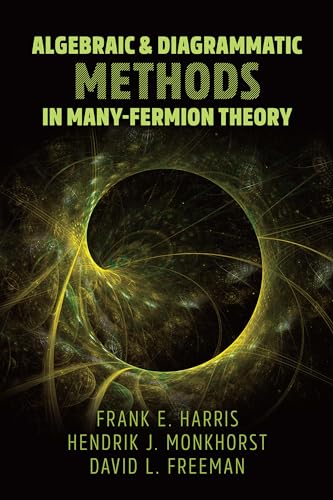Algebraic and Diagrammatic Methods in Many-Fermion Theory (Dover Books on Physics)
Algebraic and Diagrammatic Methods in Many-Fermion Theory (Dover Books on Physics) is backordered and will ship as soon as it is back in stock.
Couldn't load pickup availability
Genuine Products Guarantee
Genuine Products Guarantee
We guarantee 100% genuine products, and if proven otherwise, we will compensate you with 10 times the product's cost.
Delivery and Shipping
Delivery and Shipping
Products are generally ready for dispatch within 1 day and typically reach you in 3 to 5 days.
Book Details
-
Publisher: Dover
-
Author: Frank Harris
-
Language: English
-
ISBN: 9780486837215
-
Pages: 416
-
Cover: Paperback
-
Edition: Reprint
-
Release Date: 15-01-2020
-
Dimensions: 8.9 x 6.0 x 0.9 inches
About The Book
Electron Correlation Effects in the Electronic Structure of Atoms, Molecules, and Crystals by Frank Harris provides an in-depth exploration of electron correlation effects in quantum chemistry, aimed at graduate students in physical chemistry and physics. The book focuses on the theories and methods used to incorporate electron correlation into the description of electronic structures for various systems, including atoms, molecules, and crystals.
The text builds modern theories of electronic structure with a strong emphasis on diagrammatic and algebraic formulations, making it accessible for students with a foundational understanding of quantum mechanics. The methods are illustrated through practical examples, drawing from molecular and solid-state quantum mechanics to demonstrate the application of these concepts.
The book begins with an introduction and progresses through a range of essential topics:
-
Operator algebra: An introduction to the algebraic structures used in quantum mechanical systems.
-
Independent-particle model: A classical model of electron behavior used as a starting point for more complex theories.
-
Occupation-number formalism: A method used for describing many-body quantum systems.
-
Diagrams: The use of diagrammatic techniques to represent complex quantum systems.
-
Configuration-interaction method: A widely-used method for improving electronic structure calculations.
-
Many-body perturbation theory: A technique for accounting for the interactions in quantum systems.
-
Coupled-cluster method: A powerful method for solving many-body quantum problems.
This text serves as both a comprehensive textbook for graduate-level courses and a useful reference for researchers interested in the role of electron correlation in quantum mechanics.
Key Features:
-
Detailed exploration of electron correlation effects in atomic, molecular, and solid-state systems.
-
Clear, diagrammatic, and algebraic formulations of quantum theories.
-
Aimed at graduate students and researchers in physical chemistry and physics.
-
Covers a variety of advanced quantum mechanical methods such as configuration interaction, perturbation theory, and coupled-cluster methods.
-
Practical examples from molecular and solid-state quantum mechanics to demonstrate theory.
This book is a valuable resource for students pursuing advanced studies in quantum chemistry and physics, and for researchers seeking to deepen their understanding of electron correlation effects in quantum systems.





